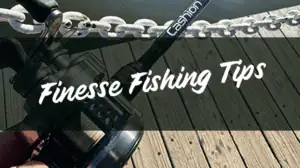How to Read a Tide Chart (Guide)
America has 12,380 miles of coastline, with nearly half of the states having a coastline.
You can do so much on America’s coasts and beaches.
But you shouldn’t pack your fishing gear, go boating, or take that epic coastal hike just yet.
You need to know when the tide is coming in and out, and your best way to find out is through a tide chart.
What are tides, and what is a tide chart?
How can you determine what the tides will be like and when they are coming in?
How can you figure out the size of waves?
Answer these questions and find the optimal times without worrying about high tide.
Here is your quick guide.
Understand How Tides Work

Tides are changes in the sea level. The Earth’s rotation and the moon’s gravitational pull affect the sea, producing rises and falls at regular intervals.
The gravitational pull of the moon is a little erratic, so the tides don’t occur at exactly the same time every day.
But scientists can calculate and estimate the tides, producing tide charts and tables.
Keep in mind that charts are estimates of the tides, so there may be inaccuracies.
Study Tide Chart Terminology

Here’s an example of a tide chart for Huntington Beach, CA.
Tide charts function like other charts in that they have an x-axis and a y-axis. The x-axis is the horizontal line while the y-axis is the vertical line. The x-axis usually represents time while the y-axis usually represents the chart datum.
The chart datum is the average of low tide heights. It does not represent the ocean floor or the height of the waves themselves. A high tide of 15 feet means the tide is 15 feet above the average low water mark while a low tide of three feet means the tide is three feet shorter than the average low mark.
A semidiurnal tide is a high tide that occurs twice per day. Most high tides occur once per day, but atmospheric conditions and the proximity of the moon can cause two. Semidiurnal tides are common on the East Coast but rare on the West Coast.
Look for the Correct Time and Place
The date of the chart may be listed in the upper-left corner. Some charts record tides across several dates, using the x-axis to write specific days and times.
Tides can change rapidly from hour to hour, so you should look for the hour as well as the date. You should also make sure you are selecting the right location. The tides are different depending on what your geographic location is, even on the same beach.
Figure Out the Tides
Tide charts present the tides as a wave or curving line. The top of the curve represents the high tide and the bottom represents the low tide.
Find where the highest and lowest points on the graphic are.
High tides are usually represented with a positive number. This indicates that the tide is exceeding the chart datum. If the tide has a negative number, the tide is falling below the average low tide.
Determine Wave Height and Wave Intervals
The wave height is the difference between the highest and lowest points of a wave. It is very important to determine the wave height if you are going to surf, boat, or fish.
You cannot find the wave height by looking at a tide chart. Waves may be higher or lower due to a number of factors unrelated to the tides. You should find a separate chart that measures the waves, though some tide charts also have tables with wave heights.
The wave interval is the amount of time between each wave. Longer intervals mean higher waves while shorter intervals mean shorter waves. You will need to look at a separate chart in order to figure out the wave interval.
Check the Weather
The weather is another factor that affects the tides. Winds can cause higher waves than normal, and rain can raise the level of the water during high and low tides.
Take a look at the weather forecast before you dive into your tide chart. Try to find an hourly forecast and see if any inclement weather or weather changes will occur.
Conditions on the shore can also impact tide heights and intervals. Rocks on the beach can slow waves down and push water away from the shore. Take a look at how the conditions are on your beach and adjust your position accordingly.
Take Advantage of the Tides
You can use the information from tide charts in different ways. For surfing, you should go out during mid-tides. Waves during low tides tend to hit the rocks while waves during high tides break before they reach the shore.
Low tide can create tide pools that let you see marine life. You can also go digging for clams, especially with good pieces of outdoor gear. Try to find good fishing gear for beginners that helps you catch clams and small fish in tide pools.
Use Your Tide Chart
A tide chart can help you plan beach trips. The moon brings tides in and out, making it easy to predict when tides will occur. Look at the x-axis of a chart to see the time of tides and the y-axis to see the tides’ relative height.
You need to use separate graphics to determine the height and interval of waves. Go fishing and boating during mid-tides, but take advantage of low tides to see fish.






